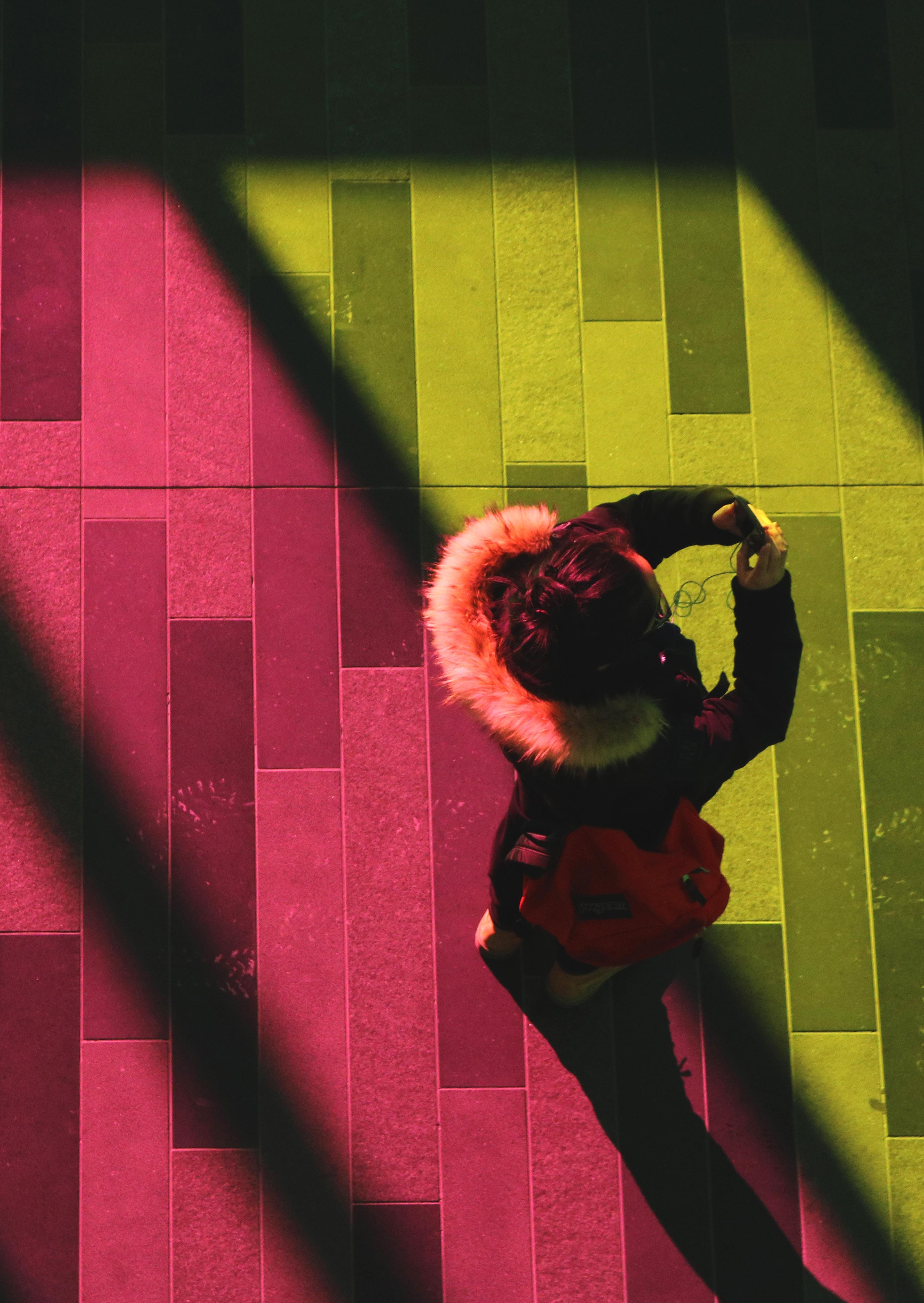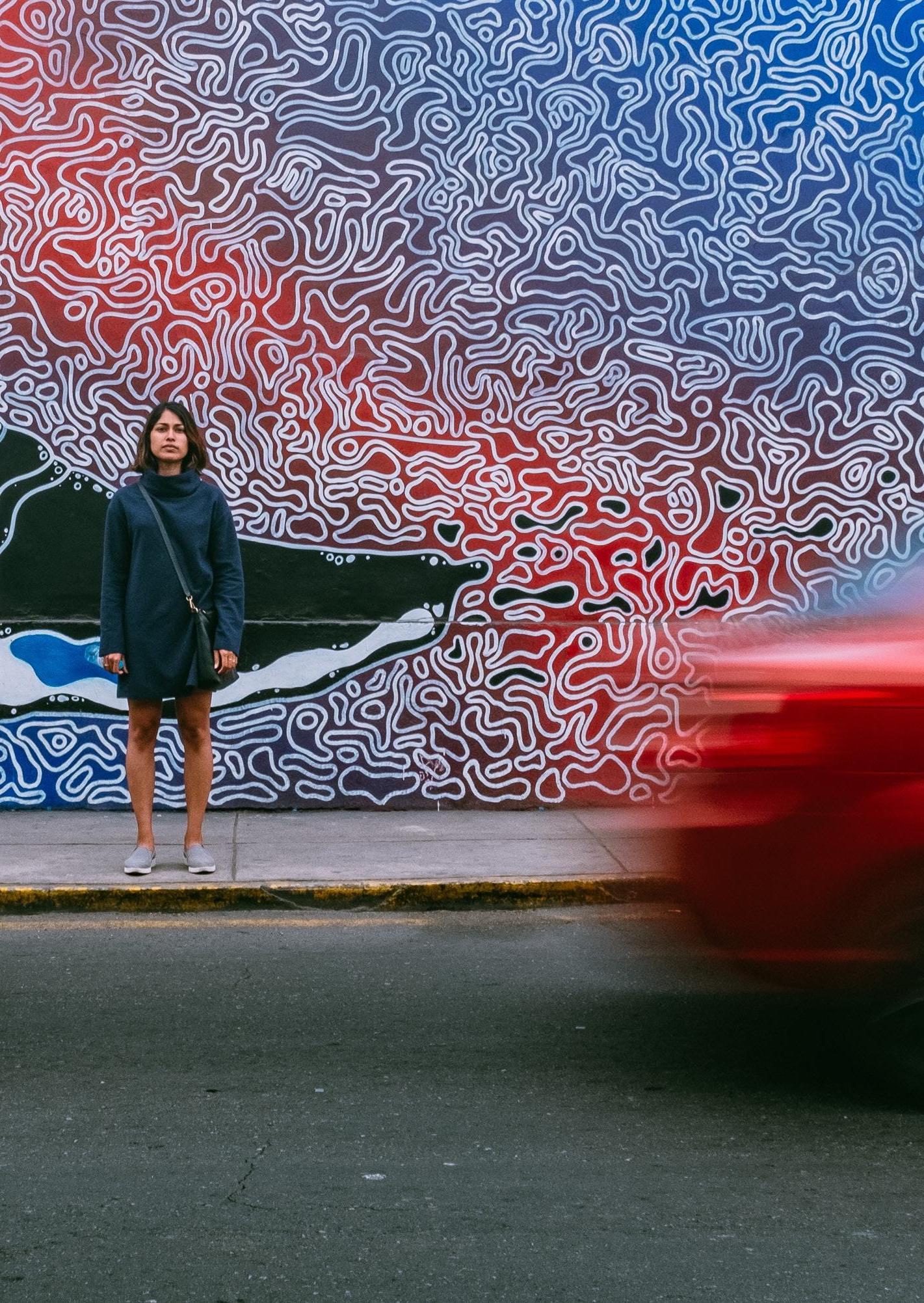
5 minute read
of
from Future of Learning Magazine
by DELTA
ISSUE #1 — Winter 2018
16 “Talking about virtual reality is like dancing about architecture.”
Advertisement
— Chris Milk, creator of the first UN film Clouds over Sidra using VR to show life inside a Syrian refugee camp
REVOLUTIONIZING REALITY

There is quite a bit of confusion about the difference between augmented and virtual reality. Both seem to change the way we perceive our natural environments, but in different ways. From there on, it is not always clear-cut how they can enhance learning. Online learning has changed the face of training and closed the gap between the natural and the virtual world.
Where online learning made it possible to learn without having to step foot in a classroom, virtual created a virtual environment presented to our senses in such a way that we experience it as if we were really there. Not so much for augmented reality which makes us see the physical classroom we are in, but adds virtual layers to it, combining both realities.
Still sounds a little confusing? That might be the case since talking about virtual and augmented reality is a bit like dancing about architecture. Let’s switch to a different approach and discover some real world applications of VR in the context of learning and development.
Building empathy and capturing lost heritage
UNESCO could definitely be delighted about the possibility virtual reality offers to capture moments and locations in history, before deterioration or vandalism can erase them. Like for example historical religious statues in the Middle East that were recently blown up. If captured in VR, those locations could still be visited.
VR also helps to build empathy if used as a perspective taking tool. By creating immersive conditions, one could put on
VR glasses and experience realistically what it is to be homeless, to suffer from autism or to work in dangerous conditions. In a recent UNHCR film, Clouds over Sidra, policy makers at Davos were taken on a virtual trip into a Syrian refugee camp, enhancing their understanding of the realities displaced people are dealing with.
The ILO Training Centre on its turn is actively exploring the added value of using VR in educational contexts. We tested out how basic and affordable VR devices, such as Google cardboards, could be used particularly for training labour inspectors and more generally within the broader field of occupational safety and health.
We even moved to the next stage by participating in the development of a real VR experience. The Maritime Virtual Tour is the virtualization of a ship to guide labour inspectors on a maritime deck. Participants put on VR glasses for an immersive learning experience not only simulating real life situations on the ship but even adding all kind of default situations an inspector could encounter.
A very useful tool in our everyday lives
Unlike virtual reality, which requires you to inhabit an entirely virtual environment, augmented reality uses your existing natural environment and simply overlays virtual information on top of it. It ads elements from the virtual world, such as images, sound and touch feedback, to the real world. Doing so, AR enhances the things we see, feel and hear. It can become a built-in feature of glasses, headset or digital contact lenses.
Picture yourself picking up a sushi box at the supermarket while your glasses project info on ingredients and nutritional values on the packaging. Or imagine yourself strolling through a museum where paintings on the walls talk and interact with you. Rubens just came back to life.
A less entertaining but potentially lifesaving use of augmented reality is in the field of healthcare. The projection of organs by holograms can help medical students to study anatomy or surgeons to prepare for complicated operations. It can also assist surgeons within the operating room, where precision is of prime importance. AR can project extremely realistic 3D images of tumors on the body, localize veins or project the patient’s vitals within the operating doctor’s field of view.
The United Nations “Not a Target” campaign which targets millennials and pushes them to act for change, uses Facebook’s Camera Effects Studio tool. It allows civilians and humanitarian workers to record and share their on-the-ground stories adding filters and augmented reality features. It immerses the audience into their environment and as they speak, their words scroll down the screen.
Augmented reality literally brings new dimensions to learning. It may entrap the attention of students as well as motivate them to study. AR can help you to learn how to play piano, by projecting the notes directly onto the right keys. Or it can project dangerous science experiments and the explosive combination of molecules in front of your eyes without risk. Augmented reality can render in 3D models anything that is hard to visualize, explain or imagine in students’ minds.
But the most common example of augmented reality you probably know about are the filters you can add to pictures on Snapchat. Or Pokémon Go, just for the record.

BYOD
Bring Your Own Device, be it a laptop, tablet or smartphone, is going to be the new reality in future learning. The ITCILO has increasingly been providing tablets during its learning activities and after 3 years, it is safe to say the initiative has been quite a success. Even up to the point that it was decided to not give master students at the Turin School of Development a tablet for their learning activities, since they – just like many ITCILO participants – are already bringing their own laptops and tablets these days. This is a clear trend that indicates a shift is going to happen in the future of learning. Is our Centre ready?
The Benefits of Learning with Devices
150 participants express their opinion simultaneously. The questions drafted beforehand are displayed through the app on participants’ tablets. When everyone has answered, the online software collects all data and visualizes the outcome in a graph that can be projected. It is great for speakers and trainers to get insights on what kind of audience they have in front of them. The audience, on the other hand, will have a greater sense of contribution. Another example is the Green Learning Game, which is played in pairs using a tablet or smartphone. It requires users to collaborate whilst exploring the location and networking with others.
Social learning, knowledge sharing and content creation increase through the use of mobile devices, which enable easy access to social media and other tools that allow the sharing of opinions and newly gained knowledge. Participants can tweet about an interesting statement, share a picture of new data they were exposed to,

COLOPHON
Editorial team: Luca Putteman, Fatma Feki, Lisa Leysens, Tom Wambeke
Proofreading: Michelle McLure
Graphic design: Joseph Miceli, Lina Ozerkina
Illustrations: Michelangelo Nigra
Edition: 200
Printed in Italy Edition #1, 2018


